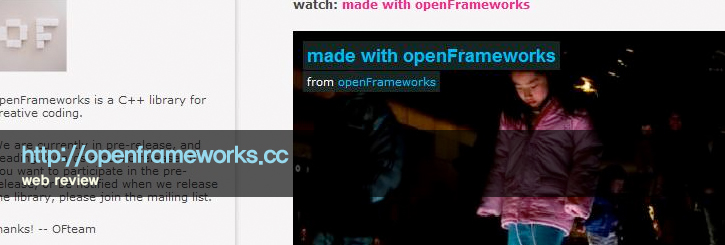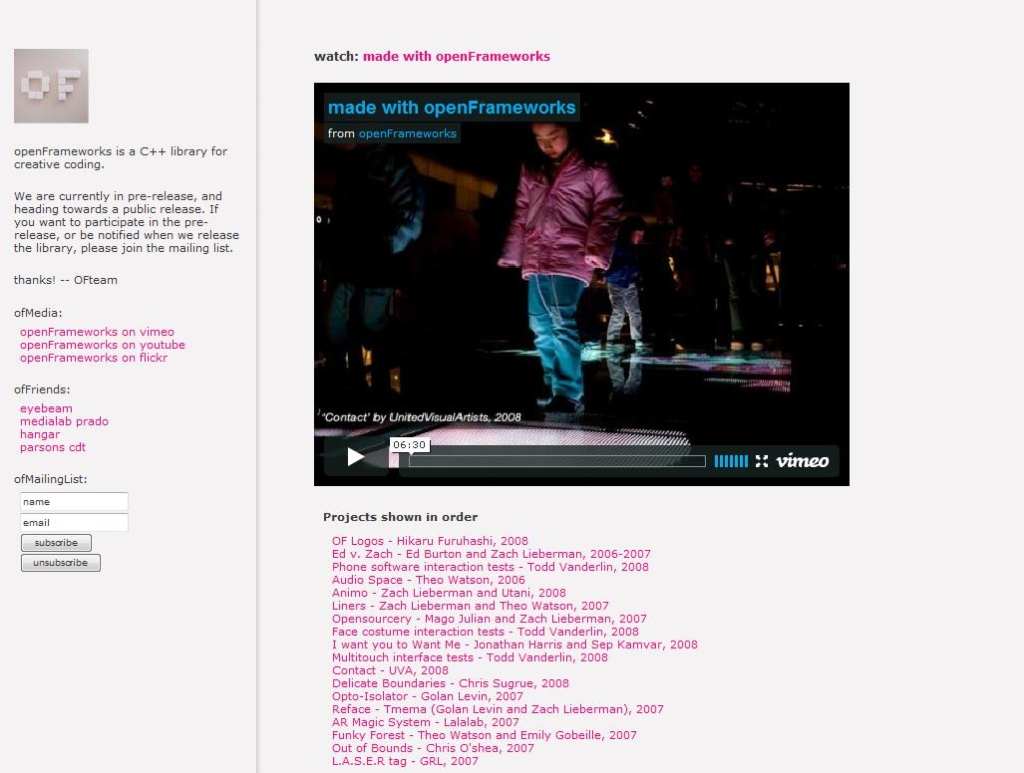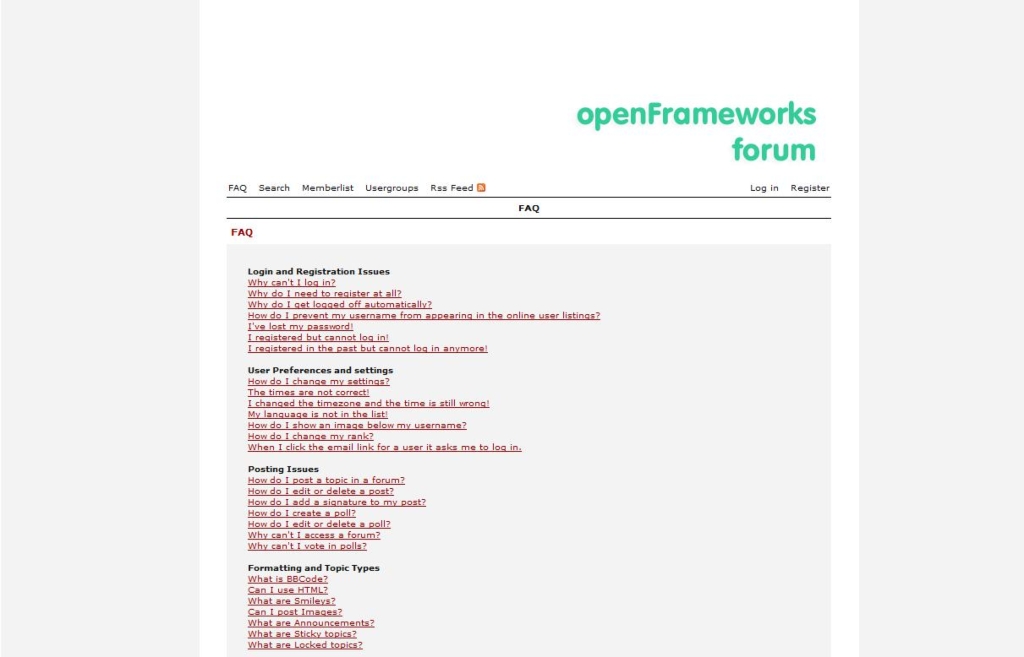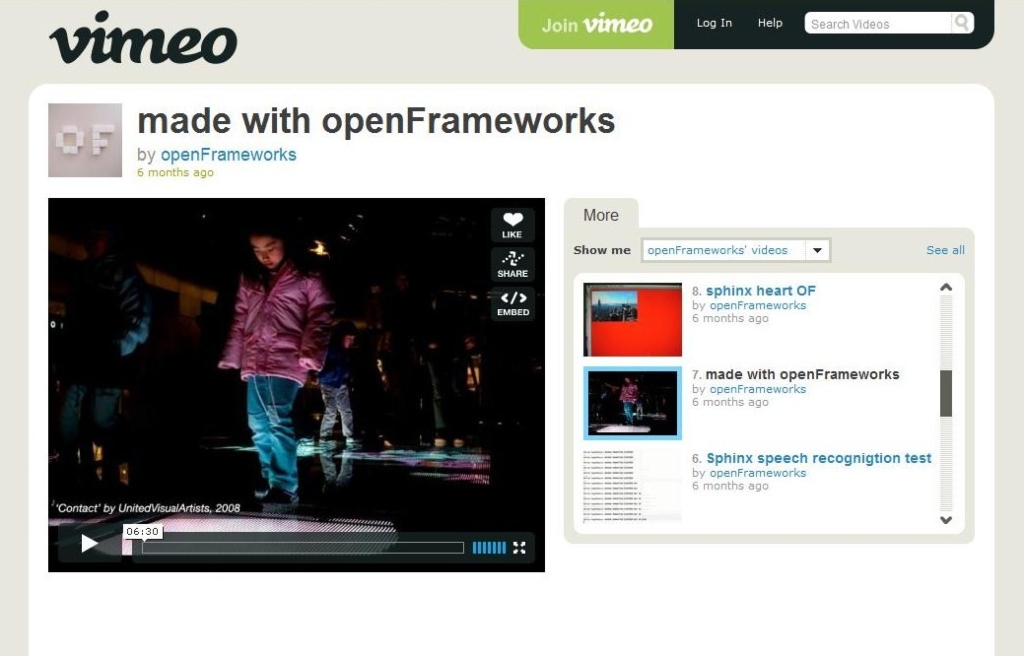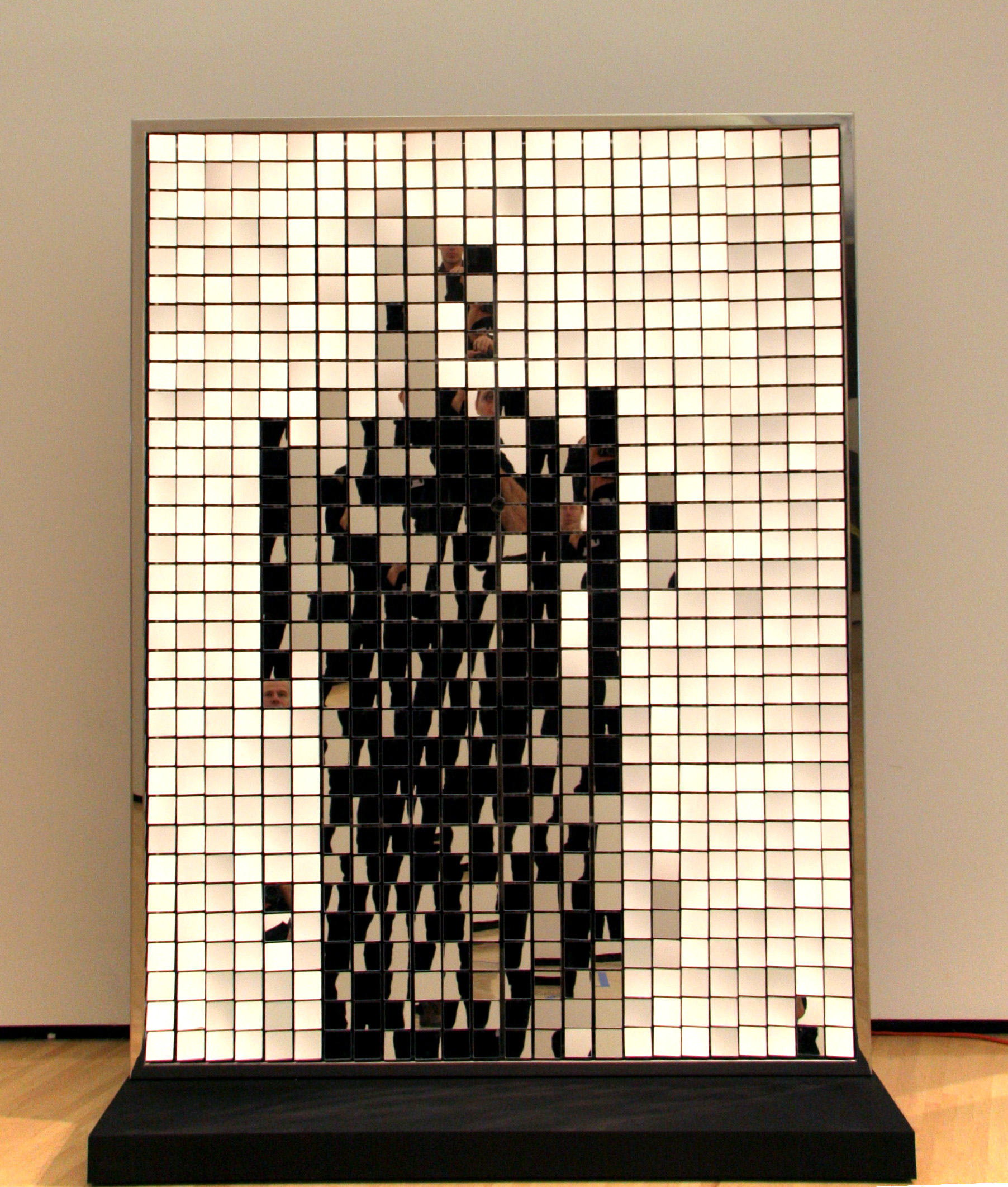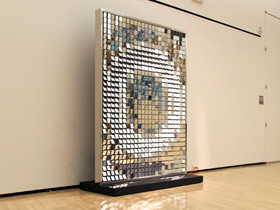openframeworks 는 C++를 기반으로 한 라이브러리로 현재 활발하게 활동하고 있는 Zach Lieberman 과 Theo Watson 이 이끌고 있습니다.
아티스트와 디자이너들을 위한 프로그램으로는 Processing 과 Max/Msp/Jitter 가 가장 유명한데 두 프로그램 모두 사용하다 보면 일정 틀을 가지게 되곤 합니다. 능숙한 프로그래머들이 자유자재로 다루기는 하지만 기존의 작업들을 보면 프로세싱으로 만들었다거나 맥스를 사용했다는 것이 충분이 짐작갈 정도로 틀을 깨기 힘든 것이 사실입니다. 이러한 경향을 띄게 되는 이유는 아무래도 프로그래머들보다 아티스트, 디자이너를 위한 프로그램이다 보니 실제 코드들을 사용하기 쉽게 단순화 시키는 과정에서 나오는 것인데요 이를 탈피해보고자 만들게 된 프로그램이 openframeworks 입니다. Openframeworks 역시 사용하기 쉽도록 여러 라이브러리를 만들어 놓은 상태이지만 c++ 기반이다 보니 좀더 다양하고 자유로운 작업이 가능합니다.
이제 막 퍼지고 있는 프로그램이어서 아직 사용자가 그리 많지는 않습니다. 등록된 웹싸이트의 사용자가 1600명 정도니까요. 하지만 점점 이 프로그램을 사용하는 사람들이 늘고 있습니다. C언어를 배우는 것이 쉽지 않기 때문에 아무래도 프로그래머로 시작하여 아티스트가 되는 사람들이 빨리 시작하고 있구요, 또 java의 연산처리속도가 많이 빨라졌다고는 하나 아직까진 c++이 더 빠르기 때문에 빠른 처리속도를 원하는 실시간 비주얼라이제이션과 관련된 작업을 하는 사람들 위주로 점점 퍼저나가고 있습니다.
처음 싸이트에 들어가면 몇가지 작업 이외에는 아무것도 보이지 않습니다. 우선 메일링 리스트를 가입해 주시고 http://www.openframeworks.cc/forum/faq.php 이곳에서 등록을 해주셔야 합니다. 재미있게도 스팸으로 가입되는 것을 막기위해 재미있는 문제도 있고 (제 경우는 농장에서 기르는 동물을 클릭하라는 문제였습니다.) ‘당신은 인간입니까?’ 라는 유머러스한 문제도 있었습니다. 이러한 질문에서도 알 수 있듯 이 싸이트는 진지한 아트를 토론하는 곳 보다는 프로그램 베이스의 미디어 아트를 하는 사람들이 즐겁게 프로그램을 배우고 서로의 작업을 구경하는 곳에 더 가깝습니다.
기타 프로그램들과 비교했을 때 아무래도 c++ 베이스이다 보니 시작이 힘들고 사용자가 적어 예제 작업도 많이 부족합니다만 Zach 이 열심히 만들고 있으니 앞으로 기대가 되고 있습니다. 이번 Ars Electronica 2008에서 부스를 마련하여 이 프로그램을 이용하여 Zachery Lieberman, Golan Levin 과 같은 유명 미디어 아티스트들이 즉석에서 관객들의 요청을 받아 작업하는 공간을 공개하기도 했습니다. http://www.openframeworks.cc/ars/
Zach은 현재 뉴욕에 있는 eyebeam 에서 R&D OpenLab Fellows 로 있어서 openframeworks 에 대한 워크샵을 자주 하고 있습니다. www.eyebeam.org 이곳에서 워크샵에 대한 정보를 얻으실 수 있고, 또한 아래 싸이트에서 openframeworks 로 검색하시면 많은 작업들을 보실수 있습니다.
www.flickr.com, http://www.youtube.com/, http://vimeo.com/of.
프로세싱의 경우 수많은 아티스트와 사용자들이 어우러져 거대한 커뮤니티를 이루었고 오픈소스의 힘으로 점점 그 가능성이 확장되고 있습니다. 미디어 아티스트, 특히 프로그램베이스로 작업을 하는 사람들에겐 이 분야에서는 정말 오아시스 같은 존재였는데 Openframeworks 가 생김으로서 또 하나의 샘을 만난 것 같습니다. 아직 부족한 부분이 많이 있지만 프로세싱과 어깨를 견주는 싸이트가 되어 미디어아트의 한 획을 긋는 싸이트가 되었음 하는 바램입니다.
소개영상 http://vimeo.com/921725
글. 김성훈(뉴욕대학교 ITP과정, skymod@gmail.com)
